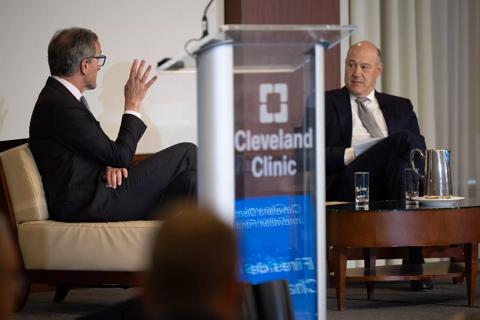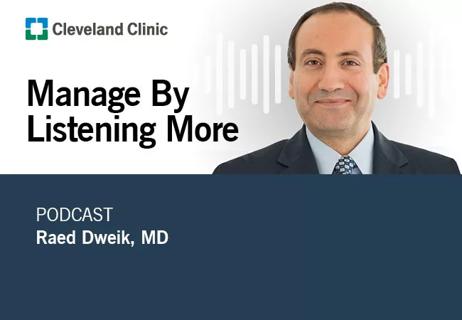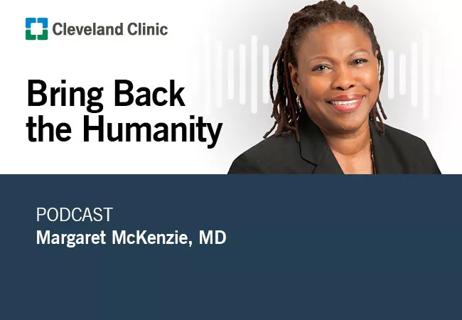Advertisement
How a team of teams can address problems as they emerge

Advertisement
Cleveland Clinic is a non-profit academic medical center. Advertising on our site helps support our mission. We do not endorse non-Cleveland Clinic products or services. Policy
Running a hospital is like flying a spaceship through an asteroid field: Problems come whizzing at you one after another. You have to deal with them now or never—especially those involving patient safety or the quality of care.
At Cleveland Clinic, we manage this barrage through a method called tiered huddles.
Tiered huddles solve problems in real time. They help us deal with today’s problems today, making our organization a better place to be a patient and a better place to work. Tiered huddles are one way we are working to create a culture where every caregiver is capable, empowered and expected to make improvements every day.
Every team at every level (every tier) has a quick meeting (huddle) at the same time every day. The huddle has two goals: to identify current and emerging problems, and to solve them.
Huddles take place in stepped tiers all day, all the way up the organizational ladder. When one tier’s huddle ends, the next tier’s starts.
At Cleveland Clinic, the first huddles of the day happen on the hospital units, with direct caregivers and their managers. The next huddle is managers and directors. After that, directors and top administrators have their huddle. Then the leaders of nursing and operations and the hospital president. The final huddle of the day includes the Operations Council and me.
Huddles happen daily at every hospital. Everyone is involved, and attendance is mandatory at all levels.
Safety problems. Quality improvement. Developing situations involving patients and processes.
The great thing about huddles is that they happen in the areas where teams work. People stand. People sit. Anyone can speak. Anyone can propose a new idea. Anyone can raise a problem.
Problems may be written on a white board. There is discussion. The team uses its collective intelligence to understand the problem and, in most cases, resolve the issue then and there.
But every team can’t solve every problem. Some solutions require more authority or more help. These are escalated to the agenda of the next huddle, at the next level up, so an issue can move from the hospital unit to me within four hours.
When I huddle with our Operations Council at 11 a.m. each day, all the other tiers have finished their huddles. My team considers our own issues, and then we address any problems that have been passed up through the tiers that day.
Usually, there are very few of these. That’s because with tiered huddles, most problems get solved quickly by those closest to the work. Teams are diverse, so solutions may come from unexpected places. Our Sleep Center, for instance, had an issue with underutilized beds. The team huddled, and one of the solutions came from an area cleaner, who identified a better way to apportion available beds among waiting patients.
I’ve observed huddles at many levels. It’s exciting to watch empowered caregivers speaking up about quality and safety, and improving patient care.
Advertisement
Another great thing about tiered huddles is that they are useful beyond the clinical context. We’ve implemented them among our support departments as well.
Check your culture. Do you encourage and reward those who speak up on quality and safety issues? Do you allow people at every level to contribute ideas on how to improve processes and procedures? The first step is to eliminate the culture of fear and replace it with a climate of teamwork and shared responsibility.
For those of us in healthcare, it’s natural to constantly have challenges thrown our way. But we don’t have to postpone their resolution. Tiered huddles turn your organization into a team of teams.
By addressing problems at the most appropriate level, they save time, improve efficiency and allow your caregivers to focus on the most important issue of all – your patients’ health.
Dr. Mihaljevic is Cleveland Clinic CEO and President.
Advertisement
Advertisement

Interactive Zen Quest experience helps promote relaxing behaviors

Cleveland Clinic and IBM leaders share insights, concerns, optimism about impacts

Cleveland Clinic partners with Palantir to create logistical command center

A Q&A with organizational development researcher Gina Thoebes

Cleveland Clinic transformation leader led development of benchmarking tool with NAHQ

Raed Dweik, MD, on change management and the importance of communication

Small business owners expand their networks and gain new insights

Leadership pearls from Margaret McKenzie, MD, hospital vice president